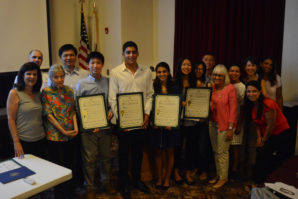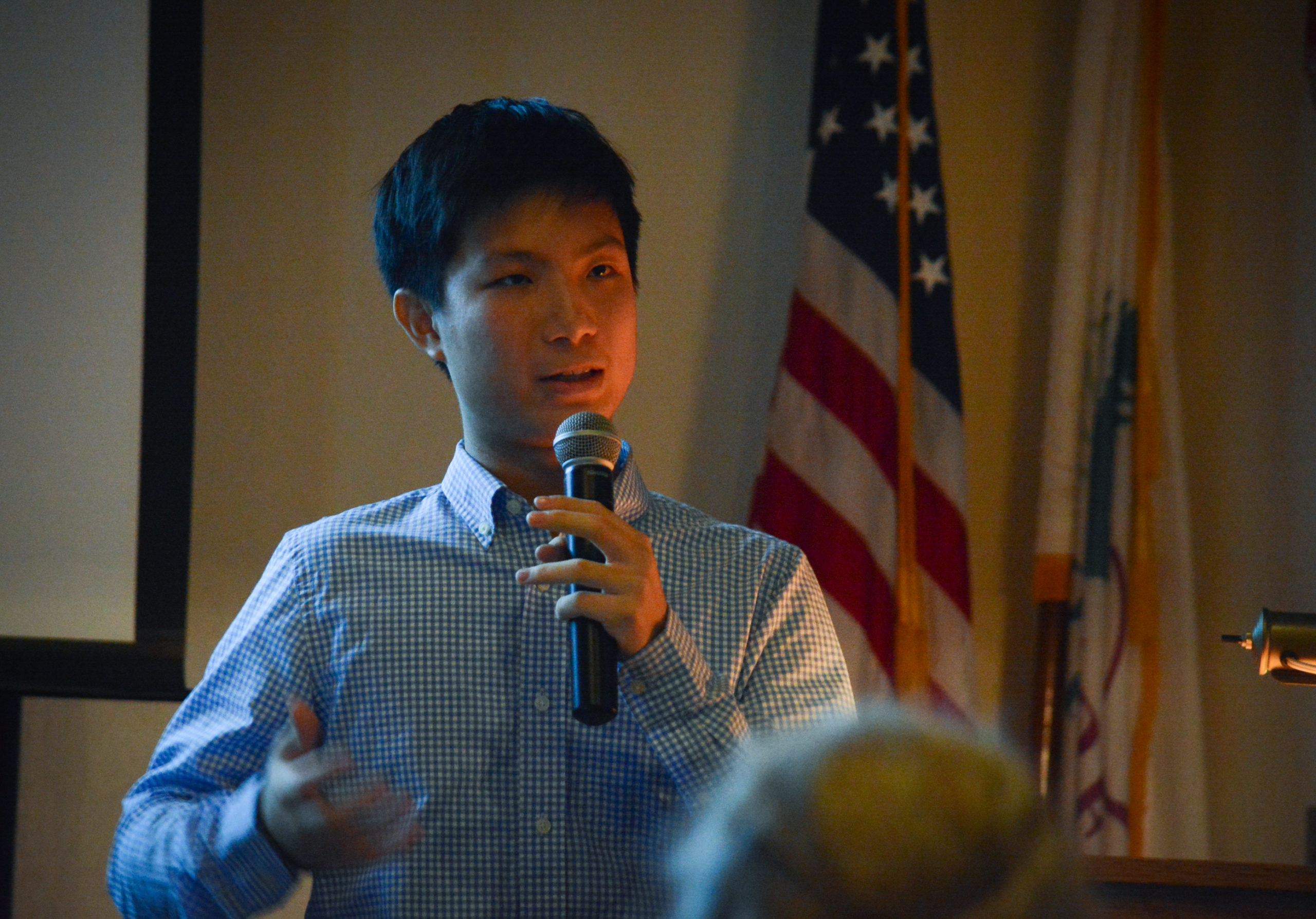Student researchers gathered to discuss the results of their cancer-related research to an audience of parents, legislators and others at the Great Neck House on Thursday night, underscoring the importance of education and action.
The Great Neck Breast Cancer Coalition, which formed in 1992 to advocate breast cancer prevention and research, has sponsored dozens of students over the years to work in research labs around the country. This year, they sponsored five students to work with universities.
“The reason that we are so gung ho about educating on breast cancer and the environment is because less than 10 percent of breast cancer incidents is due to family history or genetics,” said Laura Weinberg, the founder of the Great Neck Breast Cancer Coalition.
Amanda Shirazi and Isobelle Lim, both students from Great Neck North High School who conducted research at the University of Massachusetts – Amherst, highlighted the risks of endocrine disruptors, or chemicals that mimic hormones and block them from binding to receptors so they can be activated.
Not only do they carry risks of birth defects and increased risk of breast cancer and other health issues, they said, but can be found in pesticides, tobacco, air pollutants, alcohol and even processed meats.
“Exposure occurs at home, in the office, the air we breathe, the food we eat and the water we drink,” Shirazi said. “Despite their low doses, they still cause numerous detrimental effects.”
Their study had analyzed rats exposed in utero to higher doses of propylparaben, which is found in cosmetics like shampoo, creams and lotion to preserve them. It ultimately showed abnormal growth on their mammary glands later in life, raising concerns about the long-term potential impacts of cumulative exposure.
“We are not asking for a one and done removal of all EDCs from the environment,” Lim said, “but we are at least hoping to reduce their prevalence because for the 95 percent of cancers through such exposures, there may not be a need for a cure when we can prevent such diseases from developing from the start.”
Raymond Lin and Ethan Abizadeh then presented their findings from their research in green chemistry, a scientific field geared toward finding new chemicals that are safer replacements.
Lin said they particularly focused on how to create a healthier food film that could still preserve products without the risk of any BPA – or bisphenol A – or perfluorooctanoic acid, better known as PFOA exposure.
Both are man-made chemicals with endocrine disrupting properties.
“There have been some health concerns raised about these methods in terms of their safety and efficacy,” Lin, from Great Neck North High School, said.
They created different emulsions, or mixtures of two liquids normally unmixable, with materials like sophrolipids, lemon oil and regano oil to see which could be the most stable under certain conditions.
“With the help of my mentors, I was able to learn the connection between biosurfactants and breast cancer prevention and was actually able to act upon it,” Abizadeh said. “I created emulsions with different sophorolipid concentrations and saw which emulsions were better for food packaging.”
Weinberg said that the fifth student, Sayo Ogunleye, a graduate of Sewanhaka High School, could not attend because she is at John Hopkins University taking classes.
Ogunleye created her own study last year focusing on vitamin D concentration and its relationship with race, season and development last year, concluding that deficiencies could lead to problems with breast tissue. She also authored an article about carcinogens in cosmetics geared toward teens, Weinberg said.

“She interned at Mary Beth Terry’s research facility at Columbia University Mailman School of Public health for three consecutive summers,” Weinberg said. “And the reason that is is because she was so outstanding with her work, her passion for science, that they just kept on saying to her, please come back again.”
The four students received commendations from officials at the town, county and state levels after their presentations.



